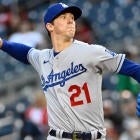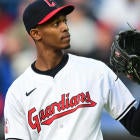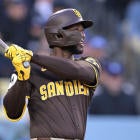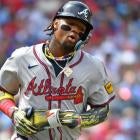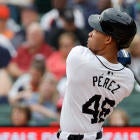As we plunge into the final quarter of the season, it's time for Fantasy owners in the title hunt to hunker down and fine tune their teams for this year's final stretch.
This column is for all of the other Fantasy owners -- the ones who are out of the running this season.
Even if you're out of contention for a title this year, it's too early to tune out. Particularly for owners in keeper leagues, there is still much to consider. If you have a trade deadline still looming, you need to think about which players to keep for next year and which you can deal for potential keepers. While this column won't deal with most of the players you'd likely consider for your protection spots, it will cover an important subset of that group: this year's rookie crop.
I have identified the 14 rookie hitters most worthy of consideration as keepers. (I will address rookie pitchers in a separate column.) Not all of these players are relevant in every keeper format. Those at the top of the list are worth considering in leagues where you are allowed a relatively small number of keepers, while most of the others are better suited for dynasty leagues with long keeper lists. In ranking them, I've looked at both their rookie season performances as well as their minor league resumes. In many cases, a player who hasn't met expectations this year is still worthy of keeper consideration because of the skill set he has displayed in the minors. Also, some of the players made this list, not only because of the credentials they established when they were prospects, but also because behind some of the less inspiring Fantasy stats put up by this year's rookie class lie some encouraging skill indicators.
Note: All season-to-date stats are current for games played through Monday, Aug. 12.
1. Wil Myers, OF, Rays: Myers has come as advertised, and after a slow start power-wise he's delivering a high batting average and on-base percentage with extra-base hits. He is also 5 for 6 in stolen base attempts, so while Myers didn't have a history of high steals totals in the minors, he did have a 75 percent success rate (36 for 48). Rays manager Joe Maddon likes to have his players run, so in addition to helping with batting average, run production and home runs, Myers could also bring some moderate steals potential to the table. In other words, he is developing into an all-category threat and a must-keep outfielder.
2. Yasiel Puig, OF, Dodgers: It's highly likely Puig will never have another season in which he hits .475 on balls in play, but even with some serious regression, he's shown that he can be counted on to help in most categories. Puig's speed could enable him to chip in with 20-plus steals over a full season, but it also means he can boost his average with infield hits. He already has 19 of them in just 232 at-bats, which gives him a rate that falls just shy of Jean Segura's (39 infield hits in 457 at-bats). Whether Puig will produce power like he did in June (.277 Isolated Power) or like he has since (.175) or at some level in between remains to be seen, but he's enough of all-around producer to be worth keeping in just about any format.
3. Jurickson Profar, 2B/3B/SS, Rangers: Profar has been atop many owners' keeper lists in dynasty leagues due to his performances in the minors. He showed the ability to make contact, hit for power (at least by shortstop standards), draw walks and steal bases, all at ages that were young for the levels he was playing. Those skills haven't transferred to the majors in his rookie season, as he's turned in a lackluster .245/.311/.344 slash line with no stolen bases. Maybe it's because Profar hasn't had a steady role, but given that he is still just 20, he simply may not have been ready for the majors. It's certainly too early in Profar's career to judge him by this season's numbers. He should find a regular role next season, and with a season's worth of growing pains behind him, Profar could take a big step forward in 2014.
4. Matt Adams, 1B, Cardinals: Though Adams has had to scrounge for playing time, he's done exactly what his minor league record suggested he would: hit home runs and provide a decent batting average. Assuming the Cardinals don't re-sign Carlos Beltran, that would open up an outfield spot for Allen Craig, which in turn would leave first base open for Adams. With everyday at-bats, Adams could hit as many as 30 homers while replicating his .280s batting average.
5. Nick Franklin, 2B/SS, Mariners: Franklin seemed to be on the road to becoming a points-league dream-come-true: a middle infielder with doubles and triples power who could make contact and get on base. So instead, he's become a whiff-happy power hitter, though so far in August, Franklin hasn't hit much of anything. His recent slump has taken a toll on his stats, but as recent as July 30, Franklin owned a .276/.338/.492 slash line. Whether Franklin continues to lean towards being a home run hitter or he reverts to his prior form, he will stack up well against much of the pool of second basemen next year and beyond.
6. Anthony Rendon, 2B/3B, Nationals: With a limited minor league track record, it was hard to know what to expect from Rendon's rookie campaign. At best, owners could have expected a high batting average and on-base percentage with power, but none of that has panned out. Most disappointingly, Rendon has drawn walks in only 7 percent of his plate appearances and hit flyballs on 29 percent of his hit balls. Owners can find encouragement in Rendon's 30 percent line drive rate, and his 21 percent strikeout rate is right in line with his minor league norms. While Rendon hasn't provided as much value as Franklin has this season, there's time for the 23-year-old to match or surpass the Mariners' second baseman.
7. Nolan Arenado, 3B, Rockies: Arenado's uneven power numbers as a prospect made it questionable to assume he would be a home run threat as a big leaguer, even with him getting to play home games at Coors Field. Sure enough, he's hit only nine home runs in his first 95 games in the majors, but with an elevated line drive rate, he's been able to amass 20 doubles to date. More homers could still come, and so could a high batting average, as Arenado has struck out in 13 percent of his at-bats. A .165 average on grounders has sunk his overall batting average, but that should improve. Arenado hasn't done enough to stand out among a crowd of talented, young third basemen, but the promise is still there to make him a worthwhile keeper in dynasty leagues.
8. Brad Miller, 2B/SS, Mariners: Miller came to the Mariners with a similar profile to that of Rendon, and he's wound up producing at a similar level to the Nationals' young infielder. He has drawn walks at a 10 percent rate and produced eight doubles and four triples in 152 at-bats through Monday, but a lack of home run power (his two homers on Tuesday notwithstanding) and a pedestrian .303 BABIP have left him well short of expectations produced by his minor league stats. While Miller was not a big-time flyball hitter as a prospect, he should improve on his current 25 percent flyball rate and .034 flyball BABIP. There are enough positive signs, despite some underwhelming surface stats, to make Miller a player to protect for the long-term future.
9. Oswaldo Arcia, OF, Twins: Arcia's 2013 stats might not look like anything special, but it helps to keep in mind that he's just 22. Though he's moved through the Twins' system quickly, Arcia has shown good power at all levels. He hasn't demonstrated great contact skills, but because he rarely pops out, Arcia has hit .300 or higher at each of his last three minor league stops. He's hit just .264 for Minnesota, but Arcia has struck out in nearly one-third of his at-bats, and he should be able to reduce that rate dramatically. Diminished expectations could mean that Arcia slips through the cracks in drafts next year, but he could make for a great late-round sleeper in redraft leagues.
10. Jedd Gyorko, 2B/3B, Padres: Which Gyorko is the real deal...the one who hit .281 with moderate power in two stints in Double-A or the one who tore up the Pacific Coast League last year? Prior to going on the disabled list with a groin injury back in June, he looked like he could develop into the elite hitter we saw in Triple-A. Since his activation in mid-July, Gyorko has hit .143 with three home runs and two doubles in 77 at-bats. He's been striking out at a rate that is out of character, but it's not clear if he's dealing with the aftermath of an injury or adjustments made by the pitchers who are facing him. Gyorko could very well pick up where he left off earlier this season, but with an uneven minor league record supporting him, it's not safe to assume that he's on the road to stardom.
11. Leonys Martin, OF, Rangers: As a minor leaguer, Martin showed signs of being able to produce steals, a high batting average and on-base percentage, and double-digit home run power. It appears he will not deliver on anything other than the stolen bases this year, but even with a .326 on-base percentage, he's on pace to swipe 37 bags. Because Martin's strikeout and walk rates in the minors were generally better than the what he's posted this year -- a 22 percent strikeout rate (per at-bat) and 6 percent walk rate (per plate appearance) -- there is reason to think that he could raise his batting average and on-base percentage next season. That would help Martin to add to his stolen base and run totals. Even if the extra-base power doesn't come, that's enough to make Martin worthy of consideration for a keeper spot.
12. Evan Gattis, C/OF, Braves: Gattis' production has slowed down markedly since the end of May, and even while seeing regular playing time in the outfield during B.J. Upton's recent disabled list stint, he hit just .244 with one extra-base hit in 11 starts. That could give the Braves a reason to bring the resurgent Brian McCann back on a new contract next season, relegating Gattis to another year as a backup. That's probably the worst-case scenario, while there is still a chance Gattis becomes a regular with 25-to-30 home run power. It would be tempting to pursue that upside, and in leagues that allow a large number of keepers, there may be little risk. However, in more limited keeper formats, Gattis' extended slump raises enough doubt to make him a risky keeper choice.
13. Darin Ruf, 1B/OF, Phillies: Finishing second-to-last on this list isn't a bad thing; Ruf still ranks ahead of Marcell Ozuna, Jose Iglesias and all the others who didn't even make the cut. I don't question Ruf's power, even though he only hit seven home runs in 83 games at Triple-A Lehigh Valley. The Iron Pigs' home park is not that amenable to homers, but Ruf now has Citizens Bank Park as his home. While Ruf should be a reliable power source with regular playing time, he'll be fortunate to hit for a decent average like he's done this year. He simply strikes out too often and has been relying upon a 28 percent line drive rate and .400 batting average on grounders, neither of which looks sustainable. The strong potential for a low average and lack of upside due to his age (he turned 27 last month) keep me from ranking Ruf higher.
14. Yan Gomes, C/1B, Indians: Both in his minor league career and in a brief trial with the Blue Jays last season, Gomes showed he has pop in his bat, but his .310 batting average with the Indians has been a pleasant surprise. A 19 percent strikeout rate and .346 BABIP have made that mark possible, though it's not a given that he can sustain either level. Gomes has worked his way into more playing time, but as long as Carlos Santana is behind the plate, there is a limit to how many games he can start. Gomes' power makes him a tempting keeper at catcher, but the uncertainty around his role limits his value.
Stay in touch with the most passionate Fantasy staff in the business by following us on Twitter @CBSFantasyBB or Al Melchior at @almelccbs . You can also e-mail us at fantasybaseball@cbsinteractive.com .













